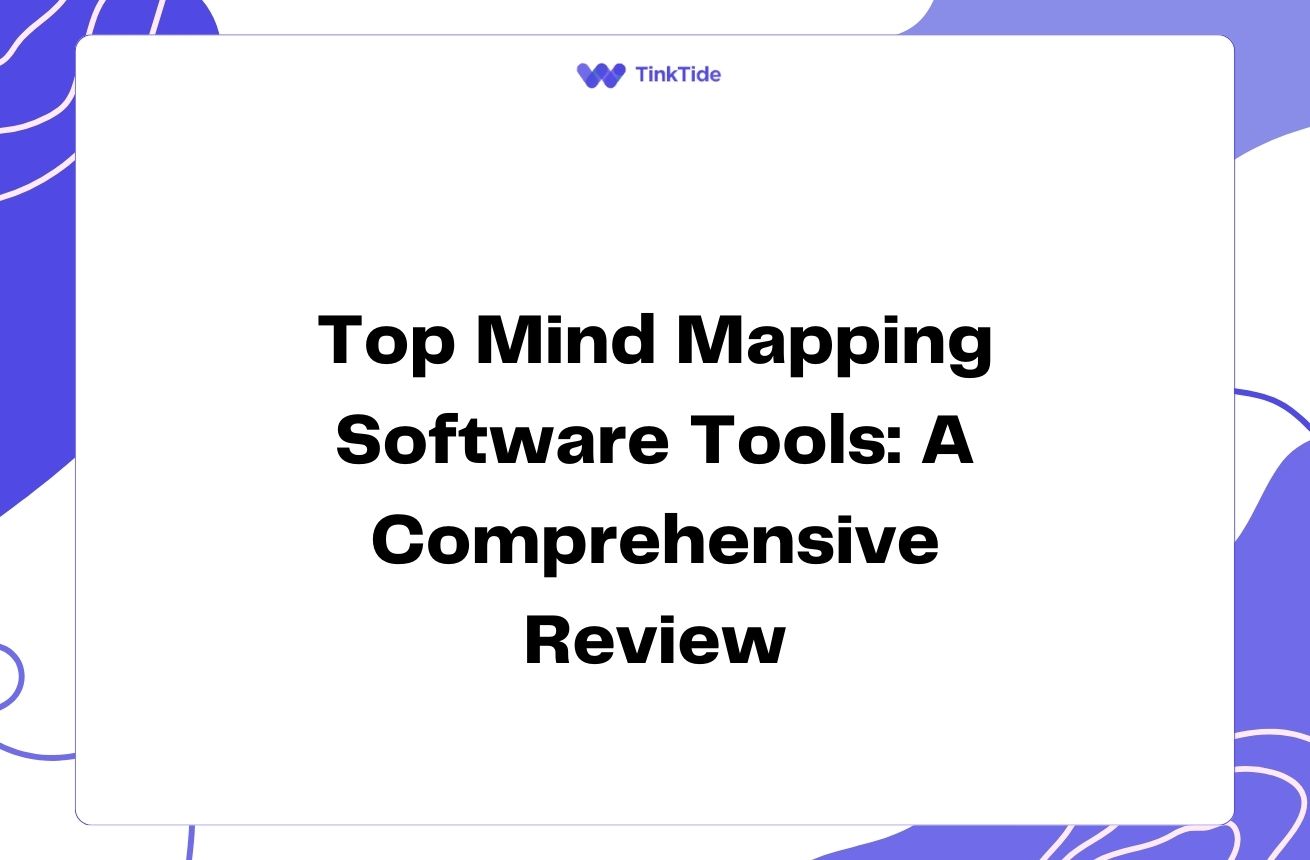Mind Mapping for Marketing: A Beginner's Guide
What is Mind Mapping?
Mind mapping is a visual thinking tool that helps you organize ideas, concepts, and information in a hierarchical and interconnected manner. It's like creating a roadmap for your thoughts, with a central idea branching out into related subtopics and details.
For marketers, mind mapping can be an invaluable technique to enhance creativity, streamline planning processes, and improve overall marketing strategies. By visually representing ideas and their relationships, you can uncover new insights and connections that might not be apparent in linear thinking.
Mind maps typically start with a central topic or theme, from which main ideas branch out. These main branches can then be further expanded with subtopics, creating a tree-like structure that represents the relationships between different concepts.
Benefits of Mind Mapping in Marketing
Incorporating mind mapping into your marketing toolkit can offer numerous advantages:
- Enhanced creativity and idea generation
- Improved organization and planning of marketing campaigns
- Better visualization of complex marketing strategies
- Facilitated team collaboration and brainstorming
- Increased retention and recall of marketing concepts
Getting Started with Mind Mapping
To begin mind mapping for your marketing efforts, follow these simple steps:
1. Choose your medium: You can create mind maps using pen and paper, whiteboards, or digital tools like MindMeister or XMind.
2. Start with a central idea: Place your main topic or goal in the center of your map. For example, 'Q4 Marketing Campaign'.
3. Add main branches: Create primary branches stemming from the central idea. These could be key aspects of your marketing strategy, such as 'Target Audience', 'Channels', 'Budget', and 'Timeline'.
4. Expand with subtopics: From each main branch, add smaller branches with more detailed information or ideas. For instance, under 'Channels', you might have 'Social Media', 'Email', and 'Content Marketing'.
Applying Mind Mapping to Marketing Strategies
Mind mapping can be applied to various aspects of marketing strategy development:
1. Content Planning: Use mind maps to brainstorm content ideas, plan content calendars, and visualize the structure of long-form content like ebooks or webinars.
2. Customer Journey Mapping: Create a visual representation of your customer's journey, from awareness to purchase and beyond, identifying touchpoints and opportunities for engagement.
3. Competitor Analysis: Map out your competitors' strengths, weaknesses, and strategies to identify gaps and opportunities in the market.
4. Campaign Planning: Outline all elements of a marketing campaign, including objectives, target audience, messaging, channels, and metrics for success.
Best Practices for Effective Mind Mapping
To maximize the benefits of mind mapping in your marketing efforts:
- Use colors and icons to categorize and highlight important information
- Keep your mind map clear and uncluttered by using single words or short phrases
- Regularly review and update your mind maps as your strategies evolve
- Collaborate with team members to gather diverse perspectives and ideas
- Experiment with different layouts and structures to find what works best for you
Integrating Mind Mapping with Other Marketing Tools
Mind mapping can complement other marketing tools and methodologies:
1. SWOT Analysis: Use mind maps to visually organize strengths, weaknesses, opportunities, and threats, making connections between different elements.
2. Marketing Funnels: Create a mind map of your marketing funnel, detailing strategies and tactics for each stage of the customer journey.
3. Project Management: Integrate mind maps with project management tools like Trello or Asana to transform your visual plans into actionable tasks.
By combining mind mapping with these tools, you can create a more comprehensive and dynamic approach to your marketing strategies.
Address common questions
Here are some frequently asked questions about mind mapping in marketing:
How often should I update my marketing mind maps?
It's best to review and update your mind maps regularly, especially when planning new campaigns or strategies. Aim for at least a quarterly review to ensure your maps reflect current goals and market conditions.
Can mind mapping replace traditional marketing planning methods?
While mind mapping is a powerful tool, it's most effective when used in conjunction with traditional planning methods. Use mind maps to brainstorm and visualize ideas, then incorporate these insights into your formal marketing plans and documents.
How can I encourage my team to adopt mind mapping?
Start by introducing mind mapping in team meetings for brainstorming sessions. Showcase the benefits through practical examples, and provide training or resources on mind mapping techniques. Encourage team members to experiment with different mind mapping tools to find what works best for them.
Are there any limitations to mind mapping in marketing?
While mind mapping is versatile, it may not be suitable for all types of information or planning. For detailed numerical data or complex timelines, traditional spreadsheets or project management tools might be more appropriate. Use mind mapping where it adds value to your process.
How can I measure the effectiveness of using mind maps in my marketing strategy?
Track metrics such as time saved in planning sessions, the number of new ideas generated, and team feedback on clarity and understanding of strategies. You can also compare the outcomes of projects planned with and without mind mapping to assess its impact on your marketing success.
Provide additional resources
The Mind Map Book
A comprehensive guide to mind mapping by Tony Buzan, the inventor of modern mind mapping.
Coggle
A free online tool for creating collaborative mind maps and flowcharts.
Marketing Mind Maps Gallery
A collection of marketing-specific mind map examples for inspiration.
Mind Mapping for Marketers Webinar
A detailed webinar on applying mind mapping techniques to marketing strategies.
Mind Tools: Mind Mapping
An in-depth article on mind mapping techniques and applications.
Summarize key takeaways
Mind mapping is a powerful visual thinking tool that can significantly enhance your marketing strategies and processes. By organizing ideas visually, you can boost creativity, improve planning, and uncover new insights in your marketing efforts.
Remember to start with a central idea, branch out with main topics, and expand with subtopics. Utilize colors, icons, and clear, concise phrases to make your mind maps effective and easy to understand.
Incorporate mind mapping into your marketing toolkit today and experience the benefits of enhanced creativity, better organization, and improved collaboration in your marketing endeavors.
Elevate Your Marketing with Mind Mapping
Ready to transform your marketing strategies? Start your free trial of our mind mapping tool today.
Start Your Free Trial

